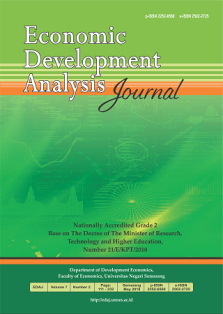Indonesian Clove Competitiveness and Competitor Countries in International Market
Abstract
Trade liberalization is currently demanding every country to increase the competitiveness of its products. Indonesia as the largest clove producer in the world has a major competitor in the international market. This study aims to determine the competitiveness of Indonesia's clove exports and competing countries in the international market and determine the factors that affect its competitiveness. The data used in this study are secondary data from five major producing countries namely Indonesia, Madagascar, Tanzania, Sri Lanka, and Comoros during the period 2000-2017 sourced from UNComtrade, FAO and the World Bank. Competitiveness is measured by Revealed Comparative Advantage (RCA), Acceleration Ratio (AR) and Export Product Dynamic (EPD) while the factors that affect competitiveness are used panel data regression methods using E-Views software. The results showed that Indonesia had the lowest RCA index, the AR value showed Madagascar and Tanzania were able to capture market share in the international market and the EPD value showed that all countries occupied the rising star position except Sri Lanka in the falling star position. Panel data regression analysis results show that the market share and GDP variables significantly influence the competitiveness of the main clove producing countries while the production variables and export prices do not significantly influence the country's competitiveness. The government must dare to take policies to limit clove imports and increase exports.


